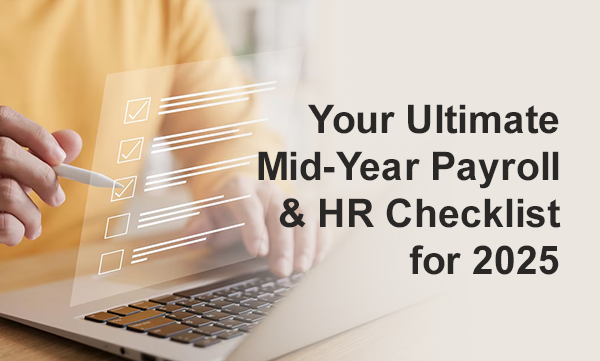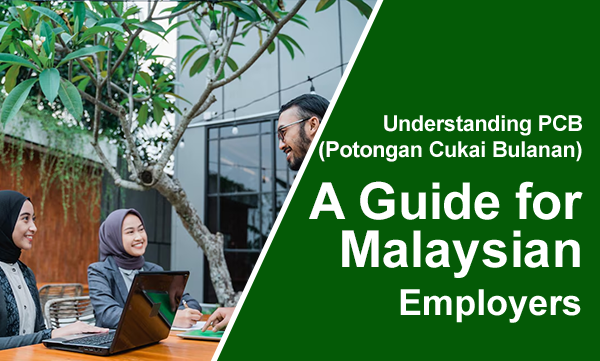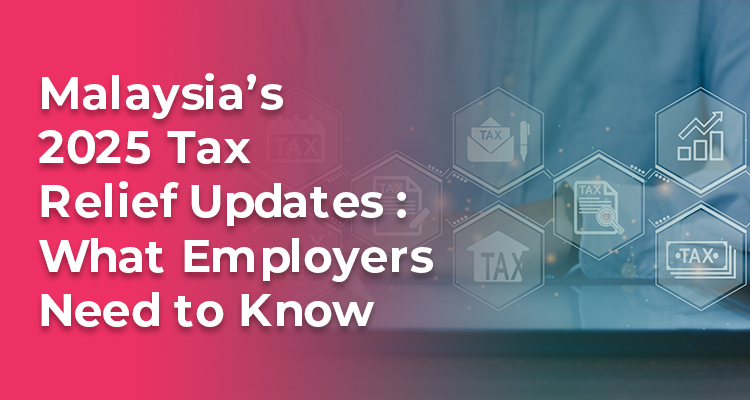
Your Ultimate Mid-Year Payroll and HR Checklist for 2025
Introduction:
As businesses reach the halfway point of 2025, a comprehensive payroll and HR review becomes more than just a good practice — it’s a necessity. Malaysia’s employment landscape continues to evolve, with updates to statutory contributions, workplace regulations, and employee expectations. A mid-year audit ensures that your business stays compliant with government requirements, protects itself from financial penalties, and fosters a better employee experience.
Here’s a fact-based, actionable checklist to guide your payroll and HR operations into the second half of 2025 — stronger, sharper, and future-ready.
1. Confirm Updates to Statutory Rates and Contributions
The Malaysian government periodically revises contribution rates for statutory bodies. In 2025, companies must ensure they are applying the latest requirements for:
EPF: The minimum statutory contribution rate remains at 11% for employees and 13% for employers (for employees earning RM5,000 or below) or 12% (for employees earning more than RM5,000).
SOCSO: Contributions are split into the Employment Injury Scheme and the Invalidity Scheme, with rates varying depending on wages. SOCSO’s contribution table was updated most recently in 2024.
EIS: The EIS contribution remains at 0.2% each from both employer and employee, based on the insured monthly wages.
HRD Corp (HRDF): Companies with 10 or more Malaysian employees are mandatory contributors, while those with 5 to 9 employees contribute optionally.
It’s vital to check the official websites (EPF, SOCSO, EIS, and HRD Corp) or subscribe to their newsletters for real-time updates.
Failure to apply the correct rates could result in penalties, backdated contributions, and legal complications.
2. Audit and Update Employee Records
According to Section 61 of the Employment Act 1955 (Amendment 2022), employers must maintain accurate and complete records for at least 6 years. A mid-year audit should ensure:
Personal information (identity card numbers, addresses) is current
Employment terms (salary, position, working hours) are correctly documented.
All changes such as promotions, resignations, and disciplinary actions are recorded.
Foreign worker permit statuses are valid and updated if applicable.
Maintaining clean, legally compliant employee records protects employers during audits and disputes while supporting operational efficiency.
3. Reconcile Payroll and Benefits
Payroll errors are more common than many realize — a survey by the Workforce Institute found that 49% of employees would begin job hunting after experiencing just two paycheck errors.
To avoid retention risks and legal liabilities:
Cross-verify that basic salaries, overtime, allowances, deductions, and statutory contributions match employment agreements and payslips.
Review benefits such as insurance, leave encashments, and bonus calculations for accuracy.
Rectify discrepancies immediately, and document corrections transparently.
Consider automating reconciliation reports monthly instead of waiting until year-end, so you can catch anomalies early.
4. Validate and Manage Leave Balances
Unmanaged leave can create a financial burden when employees resign, as employers must pay out unused annual leave based on the last drawn salary, under Section 60E of the Employment Act.
Mid-year, companies should:
Verify that annual leave balances reflect actual usage.
Inform employees about remaining balances and encourage strategic leave planning.
Update records to account for maternity, paternity, sick, and unpaid leave taken.
Digital leave management systems dramatically reduce manual errors and improve real-time visibility for both HR and employees.
5. Refresh HR Policies and Compliance Measures
Changing workforce expectations and regulatory amendments require HR policies to be reviewed at least twice a year.
In 2025, special attention should be paid to:
Flexible Work Arrangements (FWA):
Effective from 1 January 2023, under Section 60P and 60Q of the Employment Act, employees have the right to apply for FWA. Ensure your policies reflect compliant FWA request and response procedures.
Workplace Anti-Sexual Harassment Measures:
Compliance with the Anti-Sexual Harassment Act 2022 requires having a written policy, complaint mechanisms, and proper investigation procedures in place.
Occupational Health and Safety:
Remote work safety standards need revisiting to remain compliant under the Occupational Safety and Health (Amendment) Act 2022.
Employers should formally communicate any policy updates to all staff, ensuring signed acknowledgments for audit purposes.
6. Prepare for Mid-Year and Year-End Performance Reviews
While performance appraisals are often annual, mid-year reviews can drive real improvements by:
Providing feedback while goals are still in progress.
Identifying training and development needs early.
Recalibrating KPIs if business priorities shift.
According to Gallup, companies with frequent performance feedback experience 14.9% lower turnover rates.
Mid-year is the ideal time to strengthen your appraisal framework for a smoother, more credible year-end evaluation.
7. Start Financial Planning for Bonuses, Increments, and Talent Acquisition
Strategic financial planning now can eliminate Q4 stress.
Assess bonus pools based on H1 performance metrics.
Begin preliminary workforce planning for 2026 by identifying future talent needs.
Allocate training budgets for employee upskilling, especially for digital and AI competencies, which Malaysia’s Digital Economy Blueprint (MyDIGITAL) emphasizes.
When companies delay these conversations until the last minute, they often make rushed, less strategic decisions — impacting both employee morale and financial performance.
Conclusion: Build a Future-Ready Business, Starting Now
A mid-year payroll and HR review isn’t just about ticking boxes — it’s about setting your business up for sustainable growth, legal compliance, and employee satisfaction.
Companies that prioritize mid-year audits can avoid costly penalties, minimize disruptions, and build stronger, more resilient teams heading into 2026.
If you’re ready to streamline your payroll and HR operations, HR2eazy’s all-in-one HR solutions offers the automation, compliance support, and expert insights you need.
[Get in touch with us today] to find out how we can simplify your HR journey.
Sources Referenced:
1, EPF (Employees Provident Fund) Contribution Rates:
Source: EPF Malaysia Official Site
Latest minimum contribution rates in Malaysia (11% for employees, 12%–13% for employers depending on wage levels).
2, SOCSO and EIS Contribution Tables:
Source: SOCSO Malaysia Official Website
Latest contribution rates for SOCSO and EIS, including updates up to 2024.
3, HRD Corp Contribution Rules:
Source: HRD Corp Official Site
Mandatory for companies with 10+ employees; optional for 5–9 employees.
4, Employment Act 1955 (Amendment 2022):
Source: Employment Act 1955 Full Text (Amended)
Recordkeeping requirements (Section 61), leave entitlement (Section 60E), flexible work arrangements (Sections 60P & 60Q).
5, Anti-Sexual Harassment Act 2022:
Source: Parliament of Malaysia – Laws of Malaysia
Requirements for written workplace policies and complaints mechanism.
6, Occupational Safety and Health (Amendment) Act 2022:
Source: DOSH Malaysia Official Website
Includes expanded coverage to remote work environments.
7, Gallup Research on Feedback and Turnover:
Source: Gallup Workplace Research
Frequent feedback linked to 14.9% lower employee turnover.
8, Workforce Institute Survey on Payroll Errors:
Source: Workforce Institute Survey - Payroll Errors Impact
Employee trust and retention heavily impacted by payroll mistakes.
9, Malaysia Digital Economy Blueprint (MyDIGITAL):
Source: MyDIGITAL Official Portal
Importance of digital skills and upskilling initiatives for Malaysian workers.


